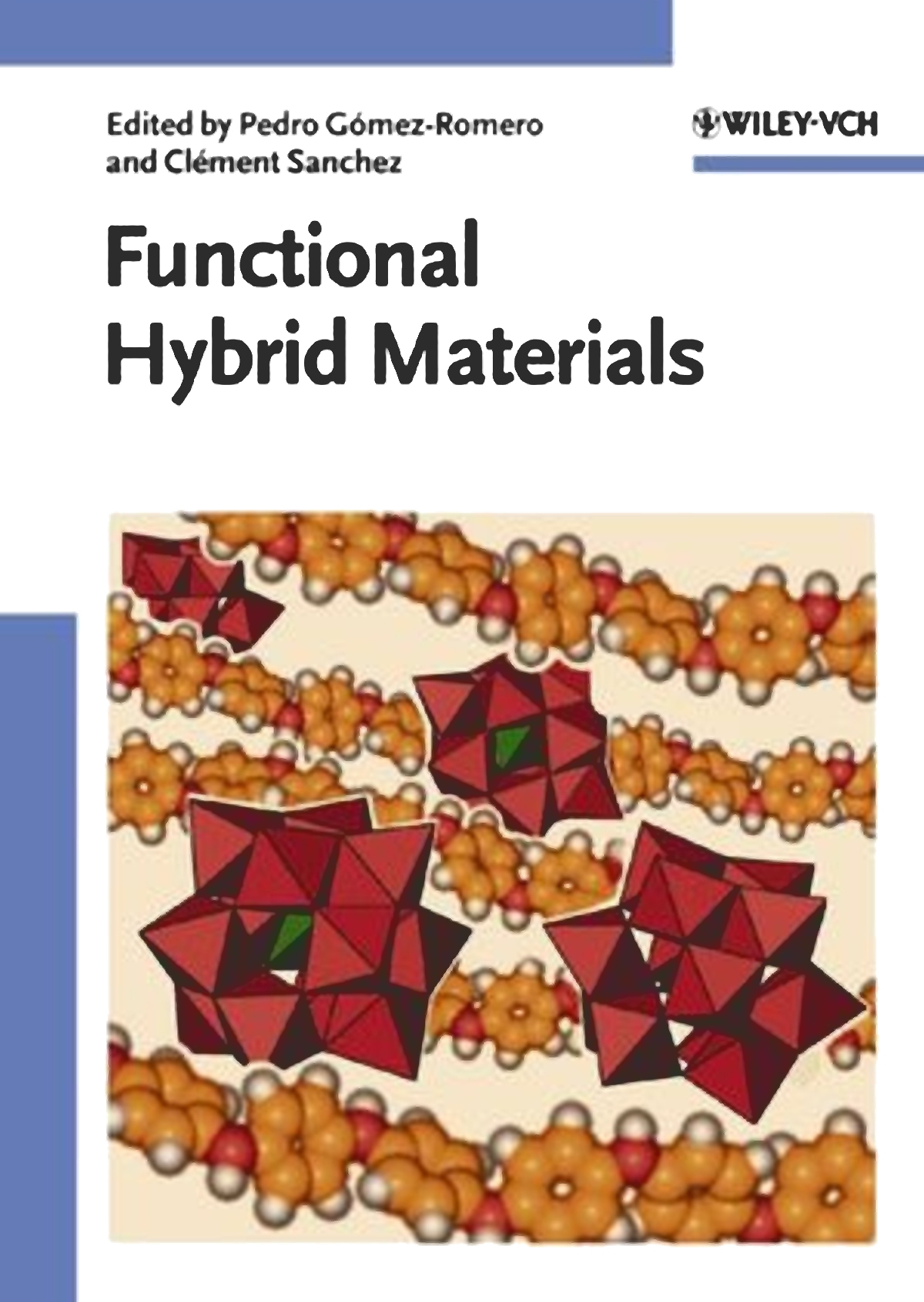
The Editors of this Volume
Pedro Gómez-Romero
Materials Science Institute of Barcelona
(ICMAB)
Campus della UAB, 08193, Bellaterra
Barcelona
Spain
Clément Sanchez
Laboratoire de Chimie de la
Matière Condensée (CMC)
4, place Jussieu
75252 Paris cedex 05
France
This book was carefully produced. Nevertheless,
editors, authors and publisher do not
warrant the information contained therein to
be free of errors. Readers are advised to keep
in mind that statements, data, illustrations,
procedural details or other items may inadvertently
be inaccurate.
Library of Congress Card No.: applied for
British Library Cataloguing-in-Publication
Data: A catalogue record for this book is
available from the British Library.
Bibliographic information published by
Die Deutsche Bibliothek
Die Deutsche Bibliothek lists this publication
in the Deutsche Nationalbibliografie; detailed
bibliographic data is available in the Internet
at <
http://dnb.ddb.de>
© 2004 WILEY-VCH Verlag GmbH
& Co. KGaA, Weinheim
Printed on acid-free paper.
All rights reserved (including those of translation
in other languages). No part of this book
may be reproduced in any form – by photoprinting,
microfilm, or any other means – nor
transmitted or translated into machine language
without written permission from the
publishers. Registered names, trademarks,
etc. used in this book, even when not specifically
marked as such, are not to be considered
unprotected by law.
Composition, Printing and Bookbinding
Druckhaus »Thomas Müntzer«,
Bad Langensalza
Cover Design Schulz Grafik-Design,
Fußgönheim
Printed in the Federal Republic of Germany.
ISBN 3-527-30484-3


 Functional Hybrid Materials.part1.rar (4.88 MB)
Functional Hybrid Materials.part1.rar (4.88 MB)  Functional Hybrid Materials.part2.rar (4.88 MB)
Functional Hybrid Materials.part2.rar (4.88 MB)  Functional Hybrid Materials.part3.rar (4.88 MB)
Functional Hybrid Materials.part3.rar (4.88 MB)  Functional Hybrid Materials.part4.rar (1.34 MB)
Functional Hybrid Materials.part4.rar (1.34 MB)